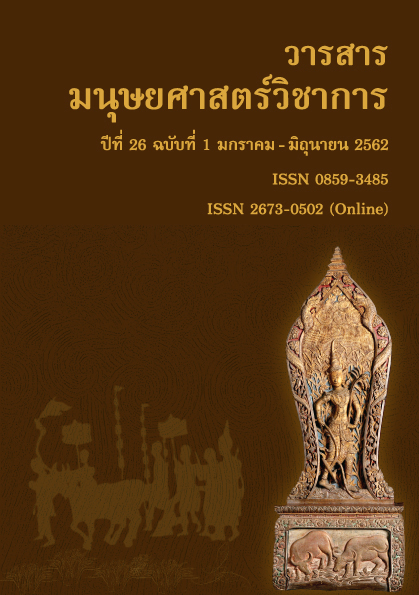Religious Culture in ASEAN A Case Study of Thailand and Cambodia
Main Article Content
Abstract
Documentary research was used: 1) to investigate religious culture in ASEAN, 2) to review religious culture in Thailand, 3) to explore religious culture in Cambodia, and 4) to analyze religious culture in Thailand and Cambodia.
The results showed that ASEAN countries demonstrated vast cultural diversity in many areas including language, beliefs, arts, and traditions that largely depended on the religion in each respective country. The important religions were Brhmanism-Hinduism, Buddhism, Christianity, and Islam. Before these religions came to the ASEAN region, people worshiped and believed in nature and spirits. The first religion to arrive in this region was Brahmanism-Hinduism, which continues to have influence over the area. Buddhism arrived later and spread to Myanmar, Thailand, Laos, Cambodia, Vietnam, and Singapore. Islam arrived in the ASEAN region in approximately the 9th century A.D. (B.E.1400) and was concentrated mainly in the Malay Peninsula and the Indonesian islands. Christianity, on the other hand, came with Western colonialism and is today firmly established in the Philippines. Moreover, Chinese-ASEAN people follow a mixture of Taoism, Confucianism, and Buddhism.
In both Thailand and Cambodia, there have been similar beliefs in Brhmanism-Hinduism and Buddhism since the times of their earliest kingdoms no less than two thousand years ago. Both religions are the foundation of the religious cultures of both countries, which have led to similar and composite cultures that might be called Buddhism compounded with Brahmanism. Of course, there are differences between the cultures of the two countries. For example, Thai is a tonal language, whereas Cambodian is not. Also, Brahmanism-Hinduism has influenced Cambodia more than Thailand as seen for instance in its ancient architecture and statuary while Buddhism has influenced Thailand more than Cambodia as seen in the form of pagodas, Buddha images, and the Pali language. Nevertheless, both countries have related religious cultures and have influenced each other over a lengthy period of time.
Article Details
References
University of Calcutta.
De Casparis, J.G. & Mabbett, I.W. (2004). Religion and Popular Beliefs of Southeast Asia before C.1500. London: Hakluyt Society. Department of Curriculum and Instruction Development. (2001). Basic Education Curriculum B.E. 2544. Bangkok: Teacher Council of Thailand.
Department of Tourism. (1971). Tourism Community Yarang Sub-district, Yarang District, Pattani Province. Retrieved May 2, 2016 from https:// www.oknation.net/blog/ancient-city-yarang/entry.
Ditsakun, S., M.C. (2004). Brhmanism in Khmer Kingdom. Bangkok: Matichon.
Fine Arts Department. (1983). Inscription of Sukhothai Era. Bangkok: Fine Arts Department.
Kusalasai, K. & R. (1995). India: Amazing Subcontinent. (2ndEdition). Bangkok: Siam.
Mary, F. (1994). Living Religions. USA: University of Florida.
Na Bangchang, S. (1975). Buddhism in Sukhothai Era. (Thesis submitted for Master of Arts, Eastern Language Program). Chulalongkorn University, Bangkok.
Na Nakhon, P. (1980). Thai Literature History. Bangkok: Thai Wattana Panich.
Phoonsap, S. (2010). Ramakien: Thai-Indian Literature Interrelation. Indian Study Journal, 5(6). 21-23.
Phra Yothathammanithet, Maj. (2003). Statement of Former Capital Folks: Statement of Khun Luang Ha Wat and Royal Chronicle. Bangkok: Khlang Wittaya.
Phradhammapiok (P.A. Payutto). (1997). Buddhism in Asia. Bangkok: Thamma Sapha.
Phramah Suradet Surasakko (Intharasak). (1994). Influence of Buddhism toward Thai Literatures: Case Study of Sepha Khun Chang Khun Phaen (Thesis submitted for Master of Buddhist Studies, Buddhism Program). Mahachulalongkorn University, Bangkok.
Pramuanwit, U. (1962). Naryana’s Courthouse. Bangkok: Odian Store.
Punyanuphap, S. (1995). Religion History. (6th Edition). Bangkok: Ruamsan.
Rooney, D. (2003). Angkor. New York: Odyssey Publications L.td.
Sukhothai Thammathirat Open University. (2008). Socio-Cultural Basis. Nonthaburi: Sukhothai Thammathirat Open University.

